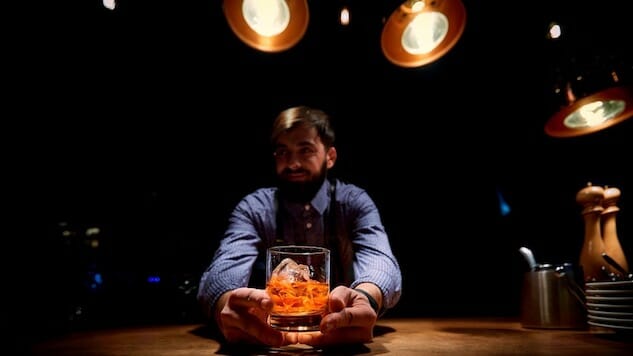Lessons I’ve Learned from Drinking
Photo via Studio Romantic/Shutterstock
A lot goes through your head in the moments before running a triathlon, but every time I’ve been in that particular position I devote a second to mortality. Races split participants up by age group, and most ask you to Sharpie your age on December 31 to a calf. Before a recent event in Austin, Texas, that meant I donned “32”—somehow, that influential “21st” year will soon be more than a decade away.
Plenty of people have their first sip of alcohol well-before age 21, but you don’t really learn how to drink until that initial rush has passed and you can experience the full breadth of what a bar can offer. When coming to the end of my first decade of dives and decadent drinks, I couldn’t help but reflect on a handful of the bars (and their invaluable lessons) that have shaped me as I bounced from city-to-city in that familiar post-college journey.
How to appreciate a whiskey neat
Syracuse University, like many of its peers, hosts a fair share of parties. Earning steady showings in the Princeton Review list of biggest party schools, I encountered many a cheap beer and multicolored punch among its numerous off-campus basements. But the start of my genuine appreciation for alcohol happened not even two miles away. At Al’s Wine & Whiskey, I slowly but surely learned how to take whiskey all on its own.
In my pre-21 days, whiskey seemed to only be available in shot glasses or paired with cola. And for an inexperienced palette used to only sugary or watery alcohol, the first harsh swig of Jim or Jack didn’t show much potential. But on one faithful night, an older colleague took me inside this dimly lit oasis—a pinball machine in the back, LCD Soundsystem (or whatever the bartender chose) on the speakers, Ira Glass emblazoned on the wall, and the most glorious library-like arrangement of booze I’ve encountered to date.
Among Al’s 1,800 available spirits, somewhere between 300-400 of them are bourbons. But the heat of Kentucky’s finest doesn’t qualify as entry level—for that, Chip the bartender guided me towards Irish whiskey. Bushmills neat became my gateway into the full body of the spirit since it offers the essence of whiskey without much of an after bite. I’d eventually graduate to heralded local options like Hudson Valley Baby Bourbon or shell out for special occasions with anything from the Dimple Pinch to Pappy Van Winkle (when I got my first job beyond Syracuse), but Chip’s sage advice from those first sips of Bushmills has held true ever since: the only right way to take whiskey is how you like it. Because of Al’s, I’ve had it neat, rocks, with a drop of water, and in cocktails. With apologies to Chip, I wouldn’t advise it with cola ever again.
-

-

-

-

-

-

-

-

-

-

-

-

-

-

-

-

-

-

-

-

-

-

-

-

-

-

-

-

-

-

-

-

-

-

-

-

-

-

-

-








































